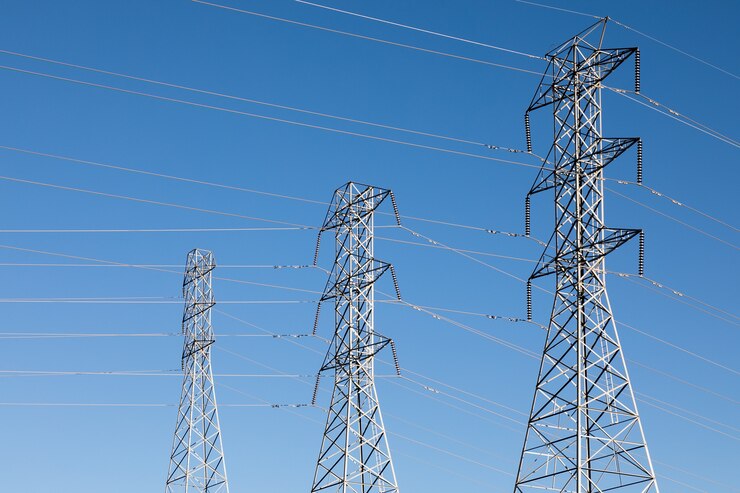Contatc
Everything You Need to Know About High-Voltage Power Lines
2025-02-14
Understanding High-Voltage Power Lines: Key Insights, Safety, and Technology
Modern power distribution depends heavily on high-voltage power lines as essential electricity transmission components. These power lines transfer electricity across extended distances which enable residential homes and commercial facilities together with manufacturing facilities to receive power. This article describes high-voltage power lines through their various forms operational principles and technical aspects as well as security measures and other essential information.
What are High-Voltage Power Lines?
High-voltage power lines referred to as high voltage transmission lines create the foundation of the electrical grid by delivering electricity across power plants to substations before reaching customers. The conductors used for electricity transmission operate at power levels substantially exceeding residential household voltage standards. High-voltage power lines need to operate at voltages starting from 110 kilovolts and above. Approximately two types of such power lines exist: the EHV transmission lines manage voltages above 345 kV and UHV power lines handle voltages above 800 kV.
Key Components of High-Voltage Power Lines
The wires used for conducting electricity are known as conductors. The three primary materials used for conductors include aluminum steel and copper where aluminum proves optimal for extended power transmission because of its lightweight properties and efficiency.
- Electricity is blocked by insulators because they serve to maintain controlled current flow patterns. Porcelain and polymer materials serve as insulators to guarantee safe electric power distribution.
- Towers as well as Poles function as support structures for high-voltage power lines running above the ground. The structures maintain wire position and create safe wiring distances toward ground and objects.
- The power grid relies heavily on transformers to change high-voltage transmission into lower voltage levels which are appropriate for residential and commercial use.
- The power grid gets protection and control capabilities from switchgear which enhances both voltage stability and regulatory functions for the power network.
How High-Voltage Power Lines Work?
The electrical transmission system employs conductive wires to transmit electrical energy using high voltage as its principal operation. A higher voltage level makes it possible to reduce energy dissipations across extended transmission paths. The basic process involves:
- The power plant stands as the origin point where electricity gets produced.
- The Step-Up Transformation process requires transformers that boost voltage levels so transmission reaches longer distances through efficient energy conservation.
- The electrical power travels through high-voltage transmission lines to transfer electricity across extended distances.
- The voltage decreases at a substation located near consumer areas to become safe and operational levels.
- The electrical power networks distribute electricity to reach homes and businesses in the final stage.

The Safety of High-Voltage Power Lines
The main safety issue surrounding high-voltage power lines presents itself as a decisive factor for people to consider. High-voltage transmission lines endanger both human beings and animals through their potential hazards. Safety guidelines together with specific protocols exist to lower these risks.
Power lines require clearance to stay safe at all times but construction workers need to maintain this safety zone, particularly during project activities. Before working near power lines people should maintain at least 10 feet (3 meters) of distance.
All personnel working near high-voltage power lines need to use protective equipment such as helmets together with insulating gloves as a safety measure against electrocution.
Inspections take place routinely to check the power lines remain intact. The inspection process requires workers to check both damaged insulators and sagging wires along with any signs of corrosion.
Staff members who operate near high-voltage power lines need to complete extensive training before handling these systems without risk to themselves or others.
How High-Voltage Power Lines are Maintained?
The performance quality and operational security of high-voltage power lines depend significantly on their periodic maintenance operations. This includes:
- The cleaning process and replacement of insulators become necessary because the accumulation of dirt affects their operational effectiveness. It is mandatory to manage replacement schedules regularly because this ensures devices operate at proper performance standards.
- The inspection of towers and poles must check for structural integrity together with wear signs rust and any damage. These structures remain both sturdy and safe through normal inspection procedures.
- Vegetation near power lines needs proper management since the growth of trees and other plants might result in disruptions and wildfires. Power lines need regular vegetation control to create a safe operating space.
Emergency repairs become necessary to restore service because outages and damaged power lines cause problems as a result of storms together with accidents in the area.
The Environmental Impact of High-Voltage Power Lines
The main environmental effects of high-voltage power lines appear through their production of electromagnetic fields (EMF). The scientific evidence shows EMF fields from power lines pose no harm to human health but some experts found that power lines cause disturbances to wildlife and local biological systems.
Right-of-way easements typically become necessary for the land that serves as the foundation of high-voltage power lines. The power companies obtain easements to allow land clearing activities for installing and maintaining their power lines that disrupt natural habitats.
High-Voltage Power Line Regulations and Standards
Many national as well as international administrative standards exist to specify how high-voltage power lines should be constructed and maintained along with their operational requirements. These include:
- OSHA (Occupational Safety and Health Administration) standards for worker safety.
- IEEE (Institute of Electrical and Electronics Engineers) provides the standard practices for power line design and installation.
Constructors must follow the National Electrical Safety Code standards to ensure safe operations.
Innovations in High-Voltage Power Line Technology
Power line technology is experiencing ongoing developments at the high-voltage level. Notable advancements include:
- The High Voltage Direct Current technology enables more efficient power transmission over long distances by reducing losses during transmission while boosting power flow capabilities.
- The deployment of digital technology into Smart Grids improves both the monitoring capabilities and system control functions as well as enhances power line maintenance to enhance operational performance and minimize outages.
- The power grid benefits from high-voltage transmission lines that bring renewable energy sources from wind and solar farms.
Conclusion
High-voltage power lines are the lifeblood of the modern electrical grid. They enable long-distance electricity transmission, ensuring that homes, businesses, and industries have a steady power supply. Understanding the technology, safety, and maintenance involved in high-voltage transmission lines helps both industry professionals and the general public appreciate their importance and ensure their safe use. For more information on high-voltage power line solutions and technology, feel free to visit XY Tower.

Hey, I’m Chunjian Shu
"X.Y. Tower: Reliable, innovative solutions for high-quality towers and electrical equipment with professional service.
